TRADITIONS & HISTORY
Volunteers are a part of more than 230 years of history and tradition. From checkerboard games and Torch nights to painting the Rock and wearing orange on Fridays—these are the moments that bind us together. Our traditions inspire us to continue creating better futures. To push the boundaries of research and innovation. To serve communities, near and far.
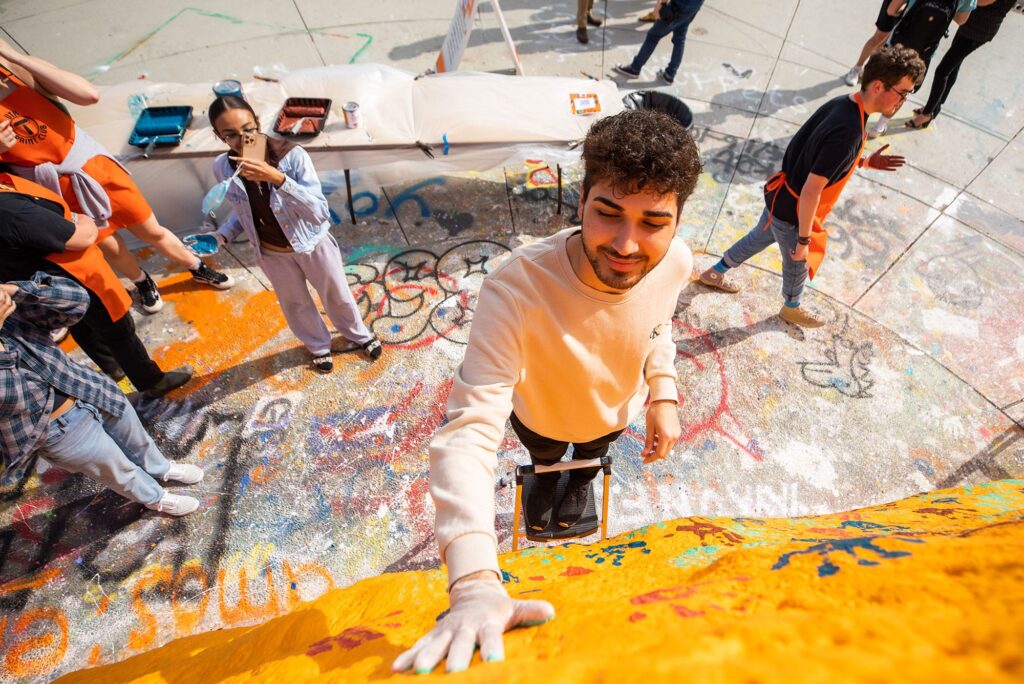
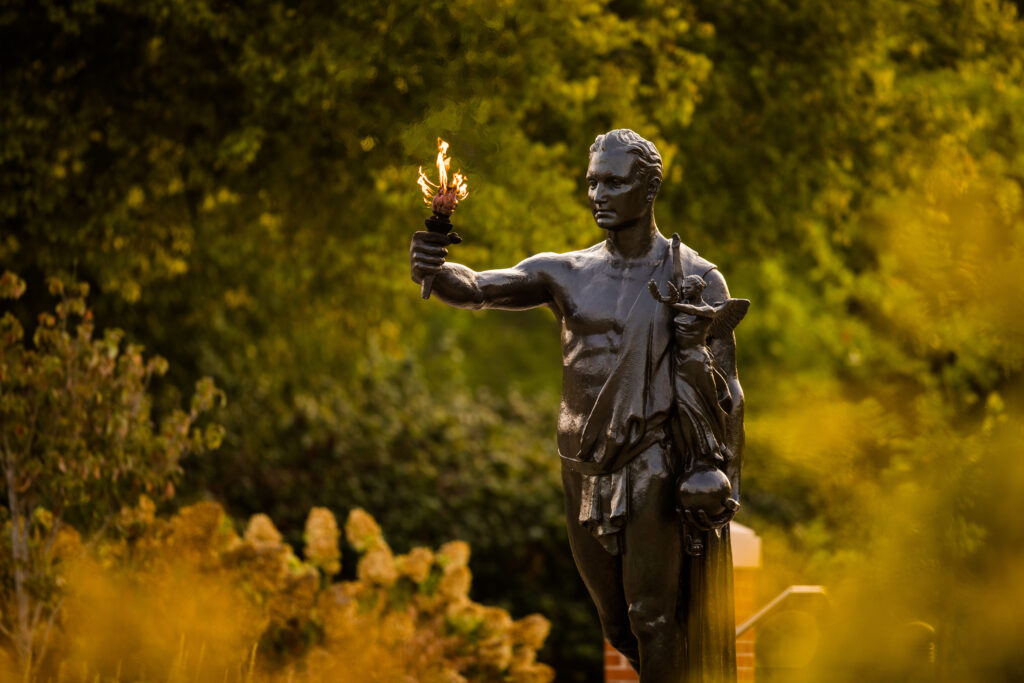
Bearing the torch
At the foot of the iconic Torchbearer statue, you’ll find a plaque inscribed with the Volunteer Creed: “One that beareth a torch shadoweth oneself to give light to others.” It is a creed that inspires every Volunteer to lead, serve, and light the way. Every year, select seniors are honored as Torchbearers, an award recognizing them for academic achievement and outstanding commitment to others.
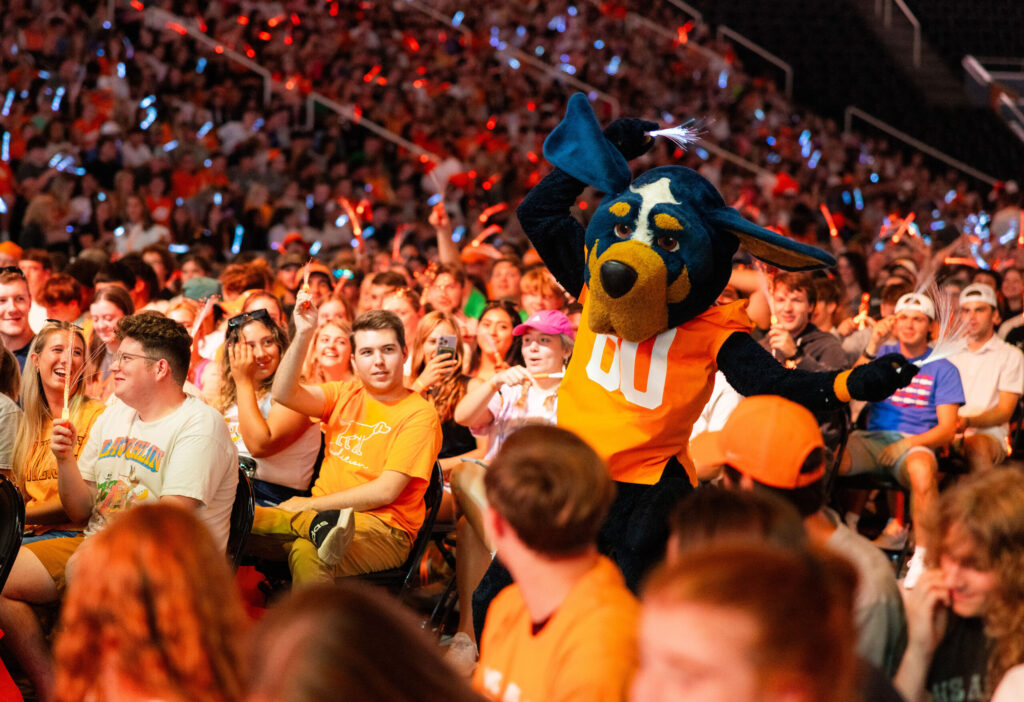
Torch Night
Since 1925, the Torch Night ceremony has declared each new class official members of the UT student body. Holding symbolic torches, students commit to embody the Volunteer spirit of selfless leadership.
Just as they began their academic journey, so too do graduating seniors hold symbolic torches as they say goodbye. At Torch Night: A Farewell to Thee, students pledge their loyalty to UT and pass their torches to upcoming seniors, inspiring them to continue lighting the way.
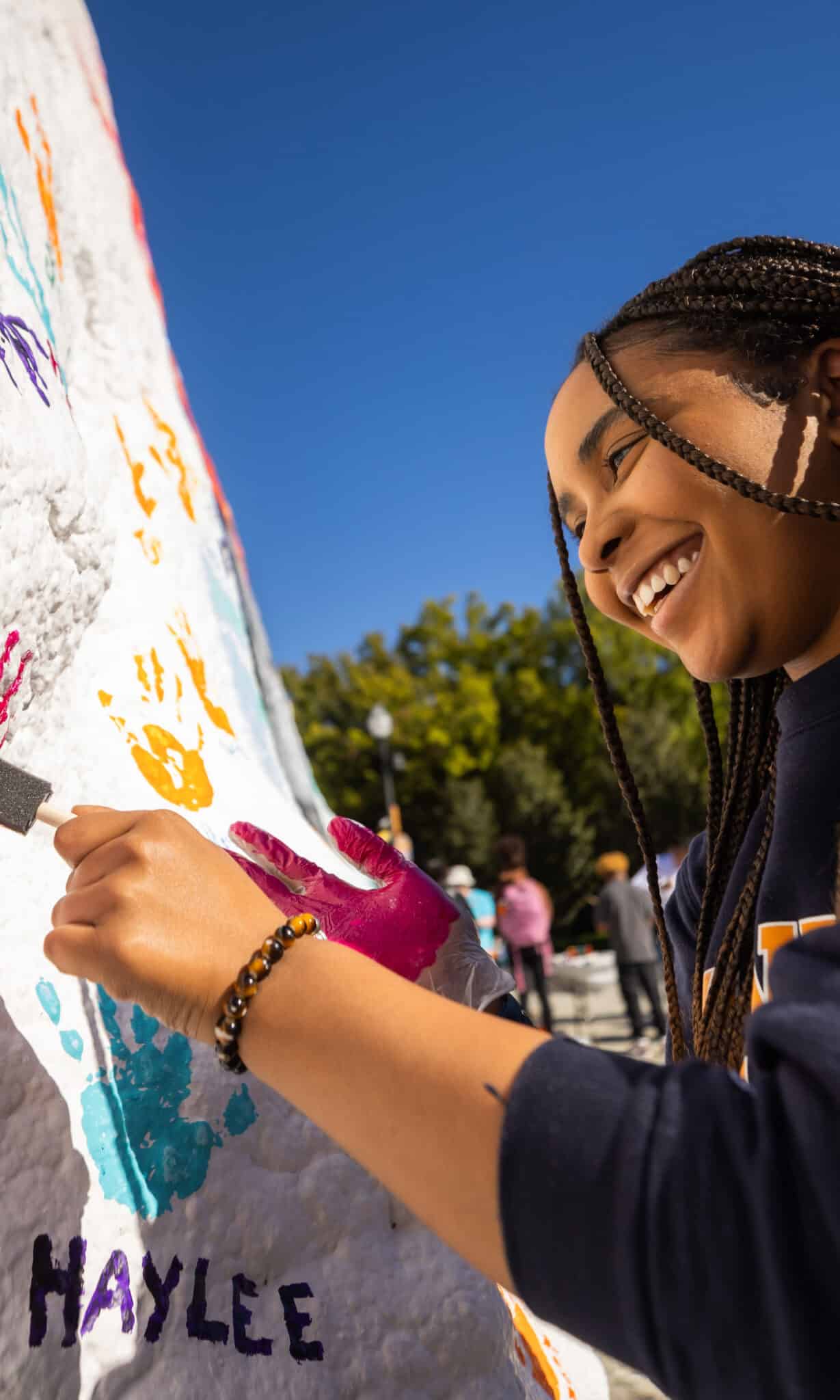
Painting The Rock
In 1980, the Rock became a campus communications hub and palette for hellos and goodbyes, birthday wishes, event announcements, sports hype, and marriage proposals.
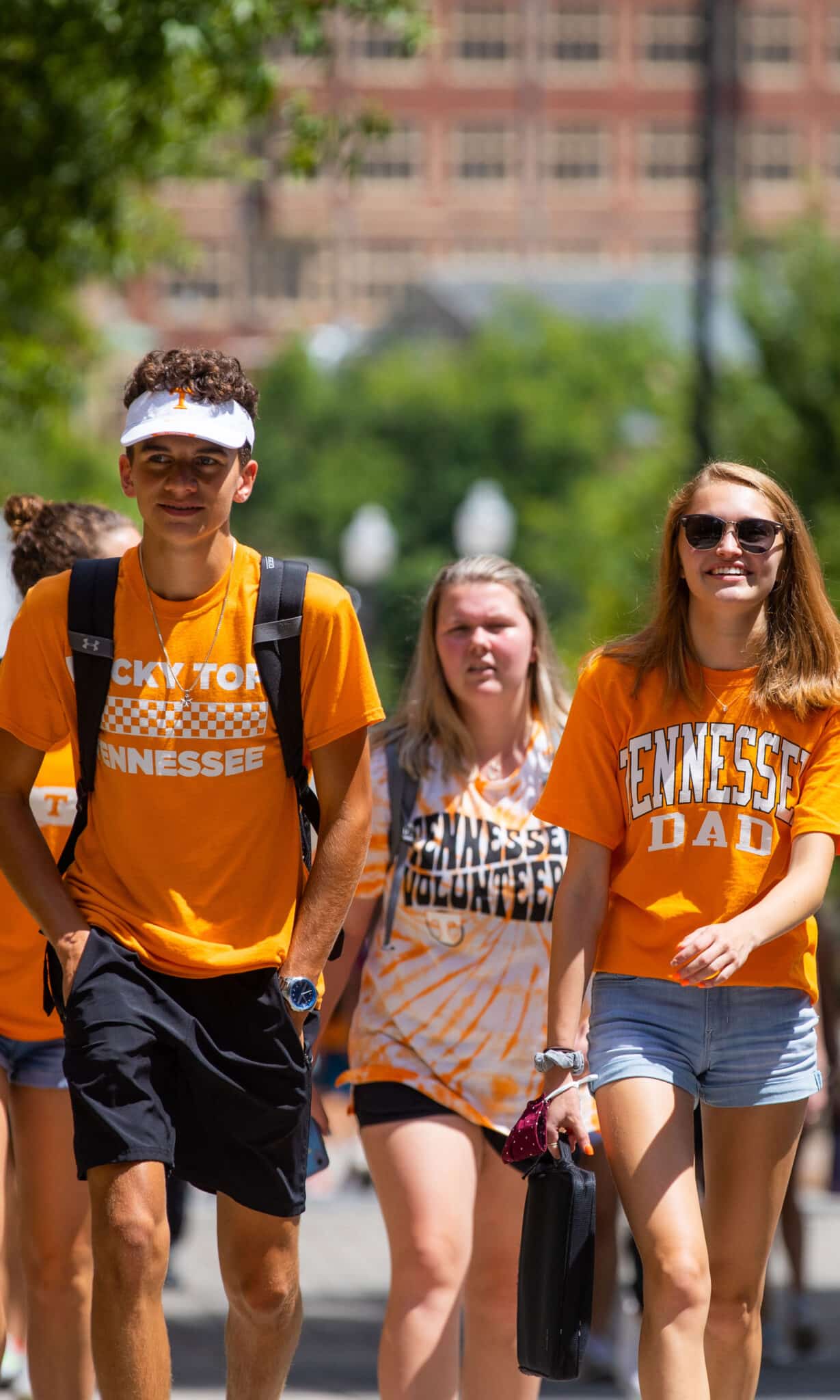
Big Orange Friday
Every Friday, near and far, members of the Volunteer family are encouraged to represent UT by wearing orange. In 1889, UT Athletic Association President Charles Moore chose the school’s orange and white colors for the first field day. The colors were later endorsed by the student body in 1892.
Fans Checker Games
In 2014, Vol fans Spencer Barnett, Tim McLeod, and Jonathan Briehl helped create a tradition where fans wear orange or white in sections to create a checker pattern in Neyland Stadium for one football game each season. Fans have also checkered basketball games at Thompson-Boling Arena at Food City Center.
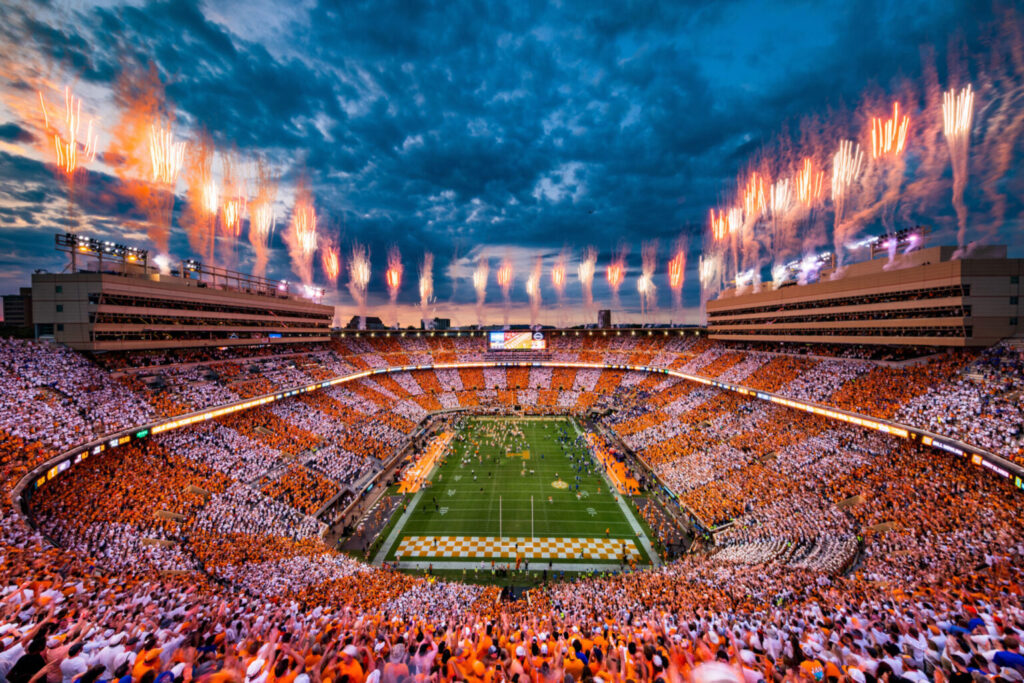
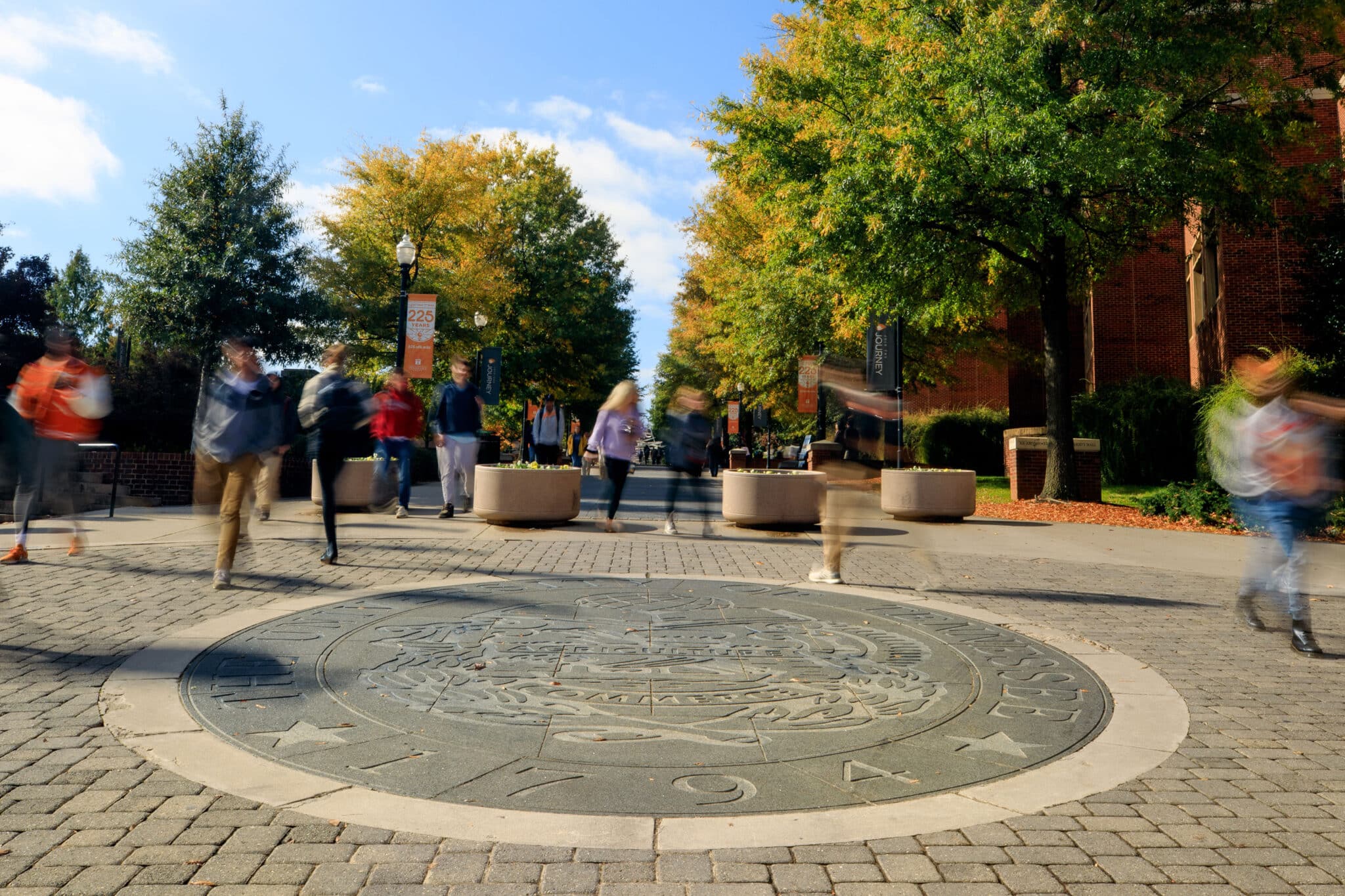
The Seal
As you explore campus, you’ll find the university’s seal proudly displayed on the Johnson-Ward Pedestrian Walkway next to Hodges Library. But be careful! Students warn that walking across the seal could be disastrous. In fact, legend says those who walk across it won’t graduate in four years.

Vol Walk
Before every home game, the football team makes its way down Peyton Manning Pass—led by Smokey and Davy Crockett—to the stadium gates. This is the immensely popular Vol Walk. Fans line the streets of campus to cheer on the team and watch the Pride of the Southland Band perform as they march into the stadium.

Vol Navy
In 1962, after radio broadcaster George Mooney traveled the Tennessee River to a Vols football game by boat, fans made boating to football games a tradition.
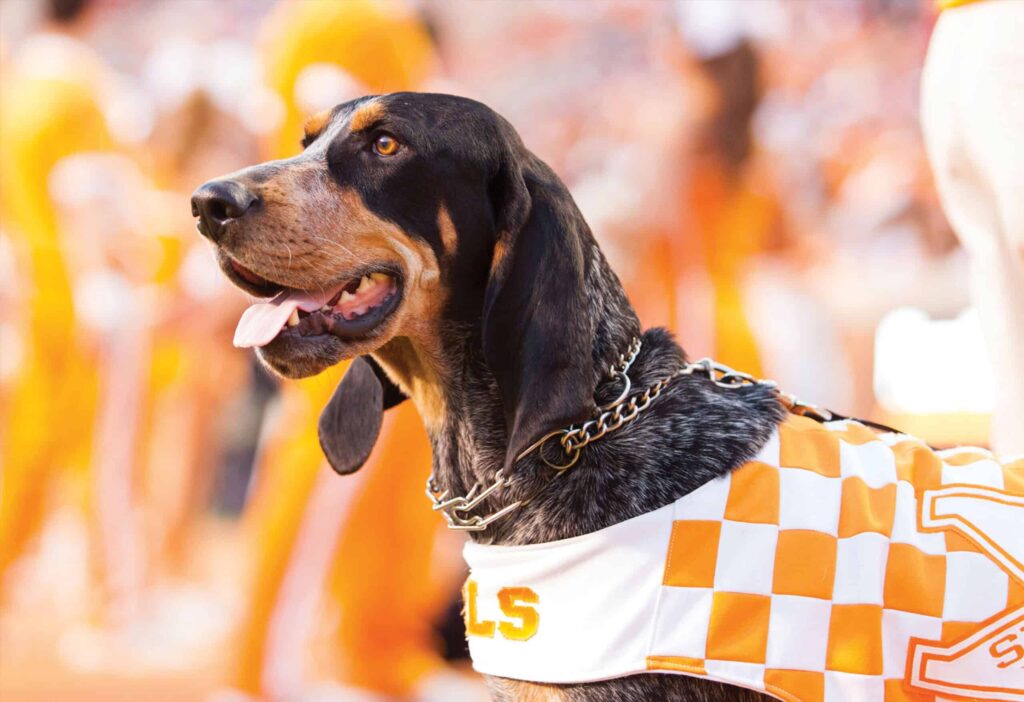
Smokey
Smokey, our beloved bluetick coonhound mascot, has a tradition of his own! At every home football game, Smokey leads the Vols through a T formed by the Pride of the Southland Band onto the field. And watch for him to run the sidelines with every Vol touchdown!
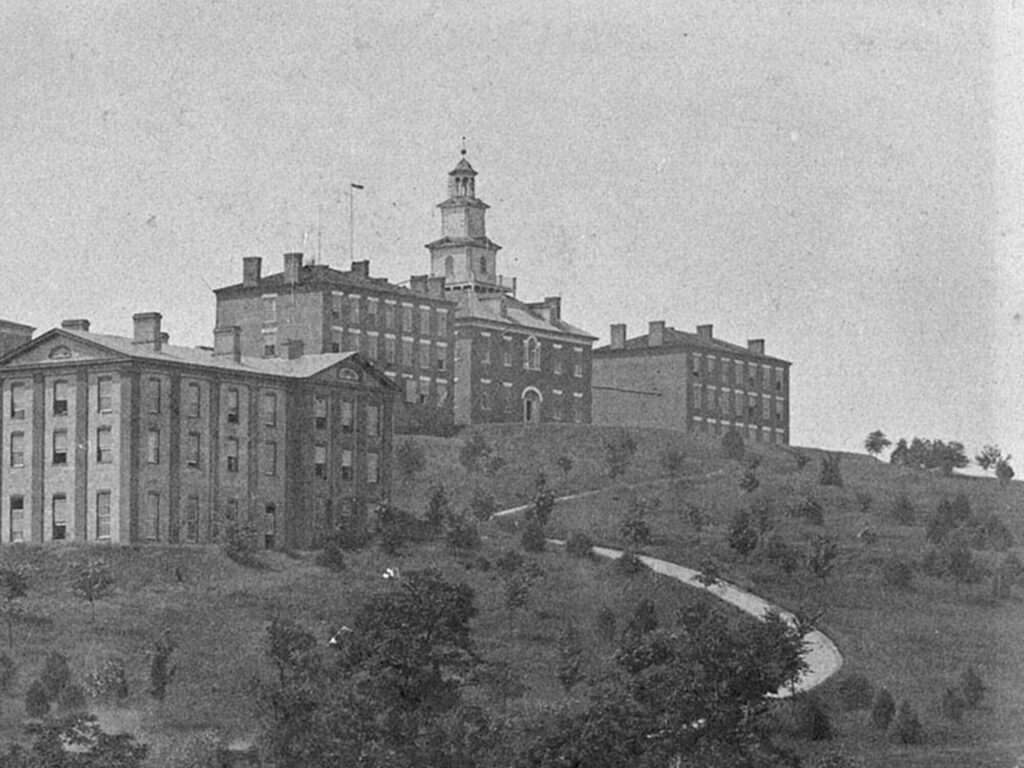
- 1794: UT is founded in Knoxville as Blount College
- 1807: Blount College becomes East Tennessee College
- 1826: East Tennessee College moves to the Hill
- 1840: The college is renamed East Tennessee University
- 1862–65: University activity is suspended during the Civil War
- 1869: The university is designated one of Tennessee’s land-grant institutions
- 1879: East Tennessee University is renamed the University of Tennessee
- 1902: UT football team is first called Volunteers
- 1921: Ayres Hall is completed
- 1968: The UT System is created
- 1994: UT celebrates its 200th anniversary
- 2013: The tradition known as Big Orange Friday begins
- 2019: UT celebrates its 225th anniversary
